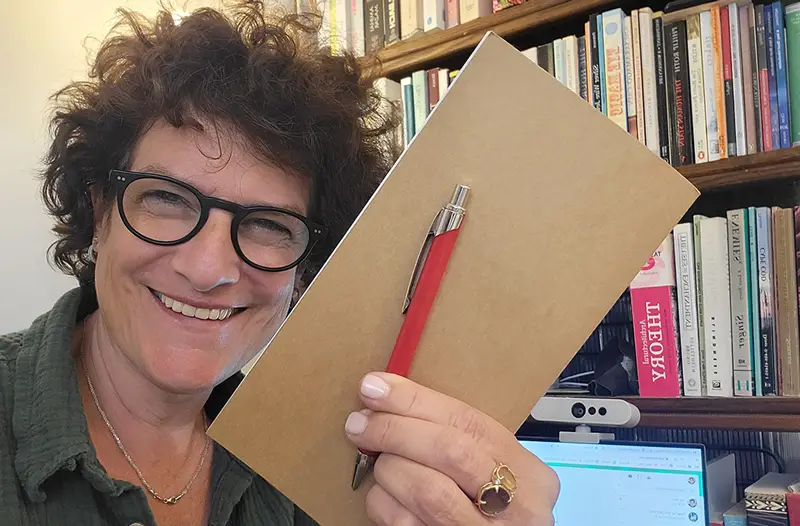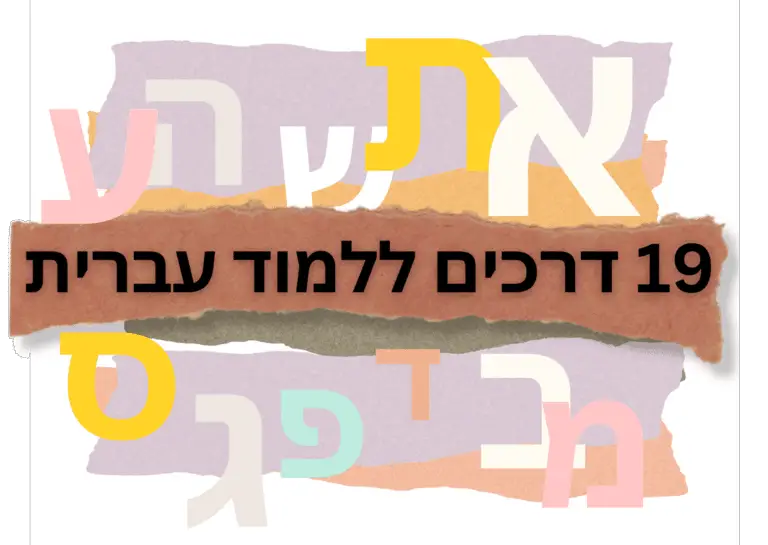Who doesn’t struggle to remember vocabulary when learning a new language? With so many different ways to learn vocabulary out there, you might be wondering which one you should choose. This post will give you an overview of the Goldlist Method, which stands out for its stress free approach, and its ease of use.
When I first heard about the Goldlist Method the thing that stood out for me is that it taps into our brain’s natural abilities and recognizes the power we have within us, an approach that’s becoming increasingly uncommon in in our technology-driven world. As a teacher, helping my students develop a deep trust in their inherent ability to retain information is key, and this method certainly does tick that box.
And now let’s take a closer look.
What is the Goldlist Method?
The Goldlist Method is a language learning technique developed by David James that focuses on helping you remember vocabulary and phrases in your target language. Instead of relying on short-term memory and rote repetition, the method is based on spaced repition, and is designed to tap into your long-term memory by writing words and phrases in a notebook, then systematically distilling and reviewing them over time.
But what is spaced repition?
Spaced repetition is a learning technique where you review material at increasing intervals of time, with longer intervals as you become more familiar with the material. The idea is that by spacing out your reviews, you can improve your long-term retention of the material.
The Goldlist Method is a specific application of that concept.
In essence, the Goldlist Method is built on the idea that memory is a natural process that works best when learning is enjoyable and stress-free, and when the brain is allowed to forget and consolidate information over time. The method emphasizes listening and developing an “inner voice” in the language, keeping track of progress, writing by hand, and passive knowledge acquisition.
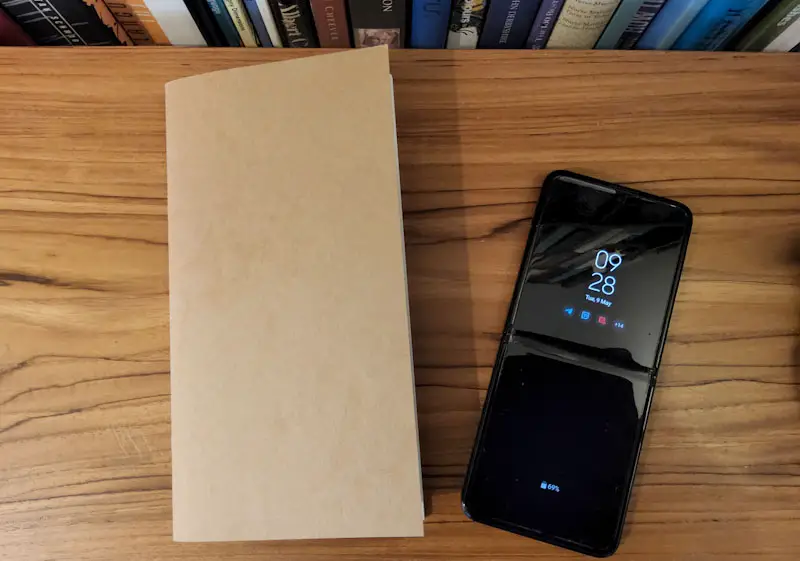
Is it easy to do?
If you have a notebook and a pen you’re good to go. You won’t need to stress about constant repetition, and you won’t be spending hours preparing flashcards either. The engine this method relies on is our amazing human brains.
But don’t let the seeming simplicity of the Goldlist Method fool you. It’s an advanced technique for language learners at all levels, from beginners to professional polyglots.
How to use the Goldlist Method
First, you need a lined notebook. This is the primary tool you use for the Goldlist Method. I think it’s best to choose a notebook that you love! Since vocabulary learning isn’t the most exciting part of learning a language (except for a lucky few), anything to tip the scale in motivation’s favor is worth taking advantage of!
You can use any notebook, but the number of lines per page (as I’ll explain shortly) will determine the size of your daily list. My favorite notebook, pictured above, is small and narrow, and simply appeals to me.
Step 1
So grab a notebook and your favorite pen and open a double spead. On the left side of the spread, write down 15 to 20 words in your target language along with their translations. This is called a “head list.” Make sure to include the date, because timing is an important element in the method. After writing your list and translations, read through them once, out loud, then put the notebook away.
For the first two weeks you can continue writing new head lists on new double page spreads, ignoring the previous head lists. This waiting period allows the natural process of forgetting to occur, which is an essential aspect of the Goldlist Method.
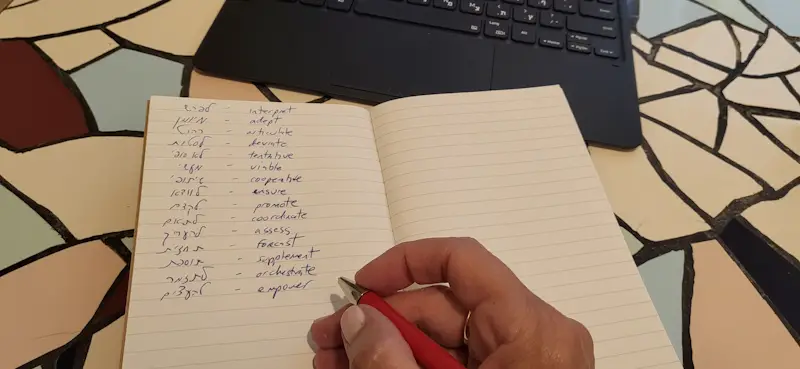
Step 2
After a couple of weeks, it’s time for your first “distillation”. This means you’ll go through your original list, covering your taget language, and see what you remember easily. And now it’s time to write down the words or phrases that you couldn’t recall. Write your new distilled list of words on the top right of your double spread, and read them aloud. Make sure to include the date.
This process of reviewing and refining is crucial for internalizing the language and improving your language skills.
Step 3
Two weeks later, open the double spread and review the shorter, distilled list from the previous step and – you guessed it – do the same thing! Write your new, second distilled list below it, as illustrated in the picture below.
Every time you distill a list, the number of words or phrases should be reduced roughly by 30%. This results in shorter lists each time. Keep repeating this process of distillation until you’re left with only a few items, ideally containing the most challenging vocabulary or phrases.
Some key points to remember when using the Goldlist Method:
- Be consistent with your writing and reviewing schedule
- Don’t rush the process – allow time for forgetting and distillation
- Review the list out loud
By following these steps, the Goldlist Method can become an invaluable tool to help you expand and internalize new vocabulary in a stress-free and enjoyable way. And remember, the key to the Goldlist Method’s success is patience, persistence, and a friendly attitude towards learning.
As you progress through your language learning journey, you’ll create multiple distillations, each with fewer items than the previous one. This process helps the material become exponentially easier to recall, as you’re continually reinforcing it in your memory.
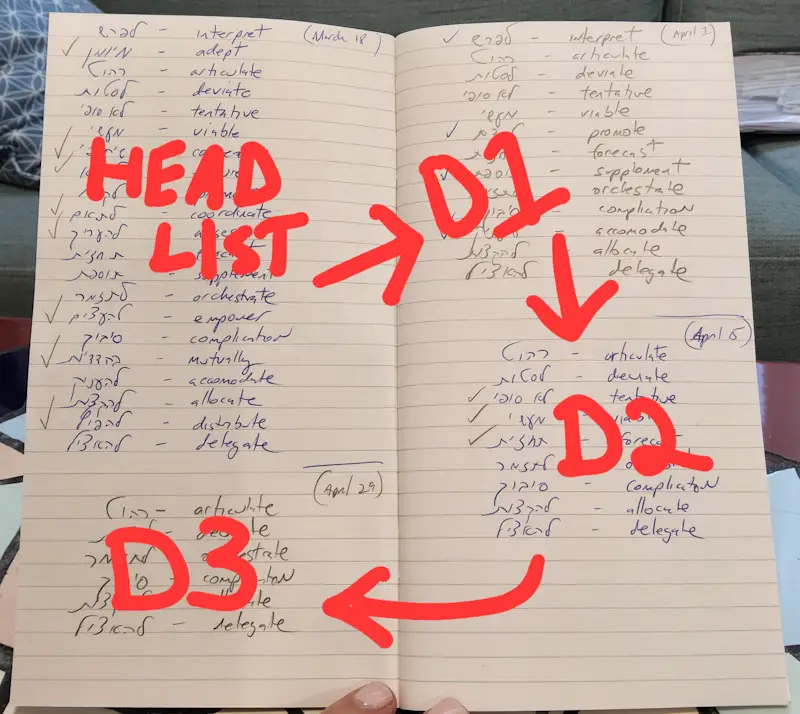
Staying Focused and Enjoying the Goldlist Method Journey
The Goldlist Method discourages memorizing or actively trying to recall words in the moment. Your attention should be on the present process of writing and curating your lists. This helps to prevent your short-term memory from interfering with your brain’s natural ability to retain information.
As you continue to study, take short breaks to let the new information sink in. Remember, the Goldlist Method is all about being in a relaxed state, so don’t stress if you can’t recall everything immediately. The spaced repetition technique ensures that the material will be reviewed and reinforced over time.
In addition to the Goldlist Method, consider supplementing your studies with other resources such as TV series, podcasts, or books in your target language. Engaging with diverse sources can help reinforce your learning and introduce you to new expressions and vocabulary.
Lastly, be patient with yourself and enjoy the process. As a language learner, you’re developing valuable skills and expanding your horizons. With persistance and supporting your studies with additional resources, you’ll be well on your way to becoming a confident polyglot.
Frequently Asked Questions
How does the process of distillation work in the Goldlist Method?
Distillation is a key component of the Goldlist Method. It involves reviewing and rewriting your vocabulary from previous head lists while removing words that you remember. This makes your lists smaller each time. This process of distillation should be done in intervals, allowing your brain to naturally recall and retain information.
Do I need any special materials to start using the Goldlist Method?
No, you just need a pen and a notebook that you like. Some learners prefer to use A4 notebooks or colored pens to organize their lists, but this is optional. The most important thing is to establish a consistent routine to work on your Goldlist process.
Why a notebook? Why not type?
There have been various studies conducted on the topic of handwriting and memory retention. A study conducted by Mueller and Oppenheimer (2014), found that taking notes by hand led to better long-term retention and conceptual understanding compared to typing notes on a computer. This study from 2021 shows that “…handwriting with a digital pen and tablet can increase the ability to learn compared with keyboard typing once the individuals are accustomed to it.”
Can I apply the Goldlist Method to any language I’m learning?
Yes, the Goldlist Method is versatile and can be applied to learning any foreign language. Many polyglots, like Lýdia Machová, renowned language mentor and TED speaker who I admire very much, have successfully used the method for multiple languages, including German, Italian, and Russian.
How can I supplement my learning with the Goldlist Method?
While the Goldlist Method focuses on improving your vocabulary and phrases, it’s important to use additional techniques and resources to enhance your overall language skills. This may include watching TV series, listening to podcasts, or practicing through conversation. Combining these activities with the Goldlist Method will help you progress in a more well-rounded manner.
Does the Goldlist Method replace the need for memory mnemonics and other learning techniques?
Not necessarily. Every language learner is unique, and what works best for one person might not be effective for another. Incorporating various techniques such as memory mnemonics, short breaks, or even muscle memory exercises may enhance your learning experience. Experiment with different strategies and choose what works best for your individual needs.
Unlock the magic of the Goldlist Method
The Goldlist Method offers an easy to implement, structured, and stress free approach to expanding your vocabulary. By focusing on long-term memory retention and reducing the pressure on short-term memory, the Goldlist Method makes language learning a more enjoyable and stress-free experience.
So grab a notebook and a pen, and give the Goldlist Method a try – you might just be surprised at how seemingly effortlessly you can expand your vocabulary. Happy learning!

